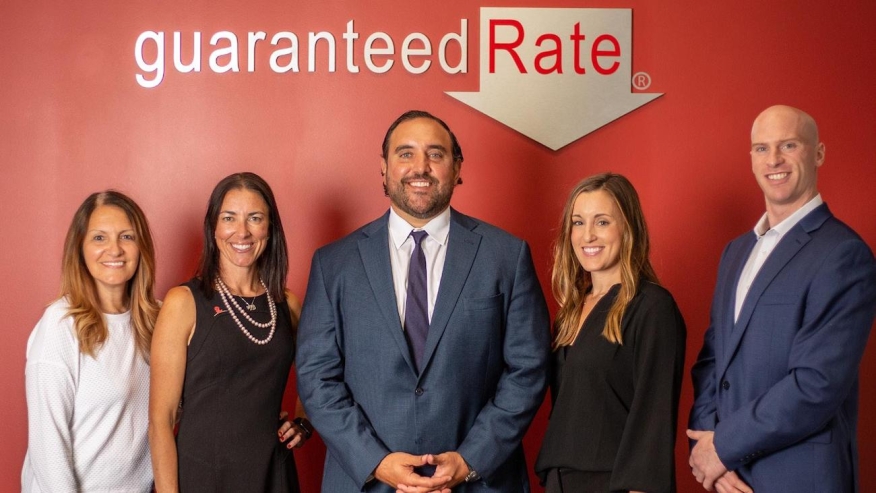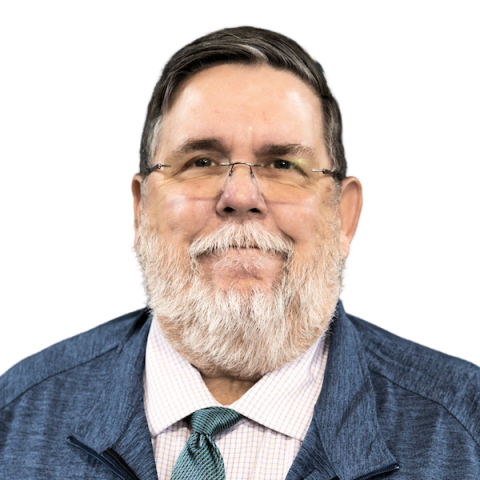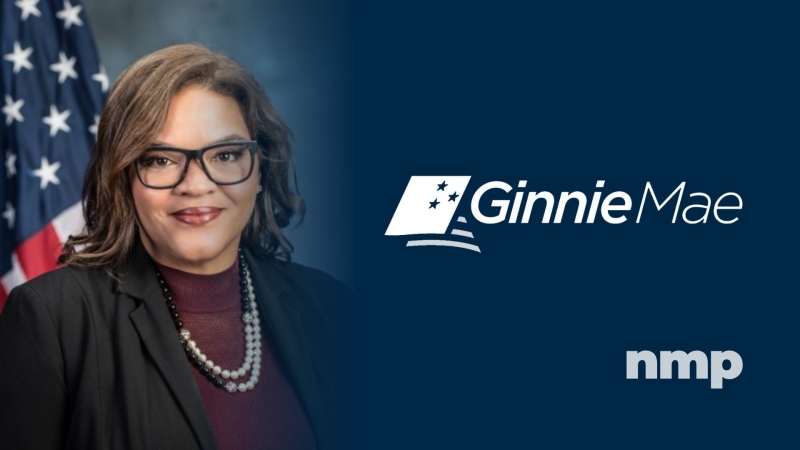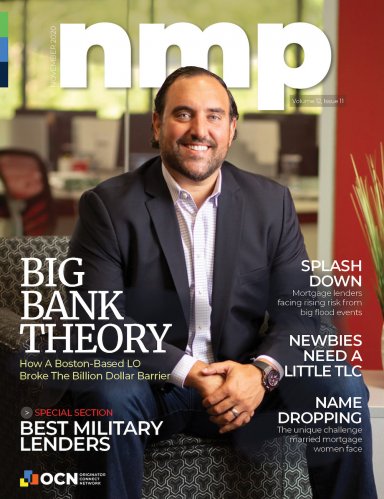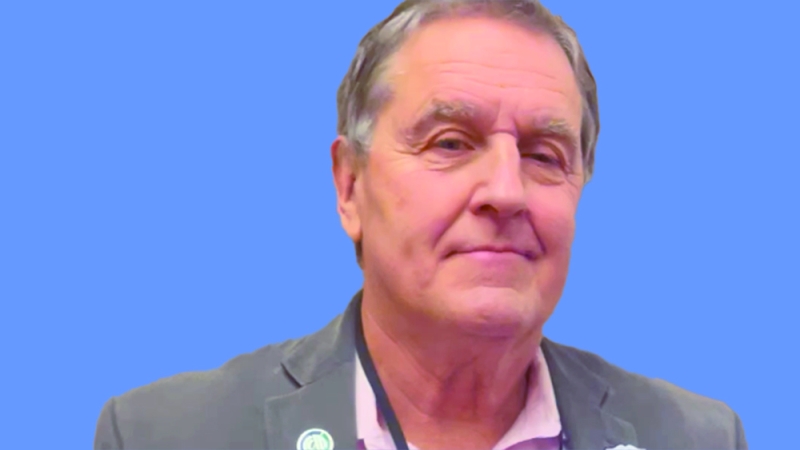Banosian sits atop a 42-person team based in the Waltham, Mass., office of Guaranteed Rate. The team includes sales support who work with clients. Others work on operations support, business development, marketing and administrative. There are other loan originators in his office, but they’re not padding his numbers. “Their production has nothing to do with mine,” he said, adding no loan originator income rolls up into his.
Why Not Go It Alone?
Banosian said he has little incentive to become his own mortgage company, in spite of origination numbers that would suggest he could make a go of it. “There are lots of things Guaranteed Rate provides that I would have zero interest in doing. I would be responsible for everything. Now, everything is plug and play: the technology, human resources, investor relations, compliance. I don’t have to spend money on that or invest it. I have two responsibilities: growing my business and doing a great job for my clients.”
Opening his own company would slow down his rate of originations, which he projects will total $1.4 billion when Dec. 31 rolls around. “We’re just getting to where I envisioned where we would be. I want to finish what we set out to accomplish here. I spend no time thinking about it. It is not where my time is well spent.”
Teamwork
Banosian freely admits he would not be successful without his large team. His work week isn’t excessive -- in the range of 50 to 55 hours. “I’m not doing 80 hours a week any more. I can’t.” He said there are weekends when he clocks out at 6 p.m. on Friday and doesn’t work again until Monday morning.
“I’ve been there doing 80-hour weeks. It was just me. I realized pretty early on that’s not what I wanted. Every year I get more balance.”
Mortgage Educators’ Luna said a team is necessary for both success and a life. It’s difficult to move ahead without some help. “I see the top originators all have teams. Those that have been doing this for years and are still making approximately the same year after year are usually alone, or worse they even process their own loans. They hide behind, ‘Well, I just don’t want to lose quality.’ I understand, but they will only be able to handle a limited amount. Top producers all have teams.
In terms of having a life, Luna added, “Why are we working this hard if it is not to have time to relax, have fun and be with our loved ones? I believe we need to be balanced. When we work, let’s work hard. When you aren’t working, relax, have fun and be with your family.”
“Top producers and great businessmen like Shant build a team that can take care of the customer service delivery equation, leaving them free to market,” said Dave Hershmann, a columnist for National Mortgage Professional who has written seven books in the areas of finance, management, sales and marketing. “But for the average loan officer, they do not have resources to hire a team and they must grow their production first. It is a Catch-22.
“Thus, the question is, how do you make this transition? I recommend two steps. Be an underwriter up-front. In my advanced originations course, I introduce the concept of being a backward investigator who prevents problems that could happen. You can’t prevent all problems such as a title issue, but if you can prevent 98% of the problems by underwriting the file up front, managing your pipeline for great customer service will be easier.
“Also, take advantage of the rainmaking opportunities within your pipeline. I teach synergy. Loan officers think that marketing and delivering service are two different activities, which take them in two different directions. You just need to open your eyes and see the opportunities. What is great about this is that these opportunities use less resources – including time, energy and money.
“If you master these two steps, you will reach the point of transition more quickly. You will soon be able to support an assistant and you can start growing your team from there.”
50-State Approach
Banosian’s business used to focus on Greater Boston, Southern New Hampshire, Cape Cod and west across most of Massachusetts. Then, he noticed his clients moving out of New England. He didn’t want to lose them, so he’s now licensed in 49 states with only Utah left to fill in the map.
“Our goal is once we do a loan … we want to be able to service them,” he said, acknowledging being part of a national operation makes that easier. He can find the right partners in each state. “Conventional loans are the same across the country. Little nuances you have to learn, but it’s very easy and there are people in each state who can help.”
Hershmann counsels that a 50-state approach may not be effective for most brokers.
His perspective is part of what he calls sphere marketing. “Top producers get their business by referral,” he said. “Referrals come from your sphere. The larger your sphere and the more value you deliver to your sphere, the more referrals you will receive.”
Offering nationwide service falls under a geographic sphere, he explained. “Serving the entire United States is an example of going wide, while I am a proponent of going deep with your marketing. If you cast too wide of a net, you will miss opportunities right under your nose. For example, if your office is located in a large building, what other businesses are located in that building which could be potential referral sources? Are you ignoring this opportunity so you can do a few loans several states away from you?
“Yes, when someone moves out of state or purchases a home out of state you could serve them by being licensed in that state. But you could also refer them to someone who has the potential to refer you prospects who are moving into your state. These prospects could then be referred to local real estate agents. Now you are in a position to add the ultimate value to those agents.
“Remember, the end game is to provide the most value to your sphere. You can only do that by going deep.”
While Banosian likes to promote the personal touch, he prominently promotes digital mortgages on his website. He says they allow more volume, work faster than conventional mortgages and deliver a better client experience.
Digital Mortgages
Being able to use tech to make things that much easier benefits him and his clients. “You can collect so much information without speaking to clients,” Banosian said. “They want to be that way, too. You try to do what works best for each client. They are just as busy as we are.”
Clients can work on their mortgage applications on their phones when they want for a smoother process. Most clients want to provide information that way. Now he has 10- to 15-minute phone calls with clients and most of the work has been done digitally. “When we meet, I already know most of the answers. It takes what used to be an hour meeting down to 15-30 minutes. It makes every minute of the call useful. There is less dead time and more time answering important questions.”
Technology isn’t going to replace loan officers, he says, but it could leave behind those who don’t use it.
“Every single industry goes through an evolution and that’s what ours is doing now. If they need a pre-approval on a Saturday they’re going to look for somebody who can deliver that. Allows us to be more available,” he said.
“I differentiate myself by getting clients ready. It still takes human interaction. That can add a lot of value. Digital mortgages replaced parts that could be replaced. I feel like I’m doing all the impactful stuff,” Banosian said.
CEO Vs. Salesman
Banosian moved from a top producer to a mega producer when he stepped back and started planning for his business.
“All the best loan officers across the country would tell you two things they are better at. They are better at working on their business. They run it like a business and spend time on it: learning more about sales, marketing, tech, operations, etc. They also work on being rainmakers: bringing in relationships and deals.
“If you can spend more time on those things, your business is going to grow,” he said. “You can be most technically proficient loan officer, but if you don’t run your business like a business and leads don’t come in, it doesn’t matter. The phone needs to be ringing. You have to be well rounded. We’ve been able to work on all those things.”
